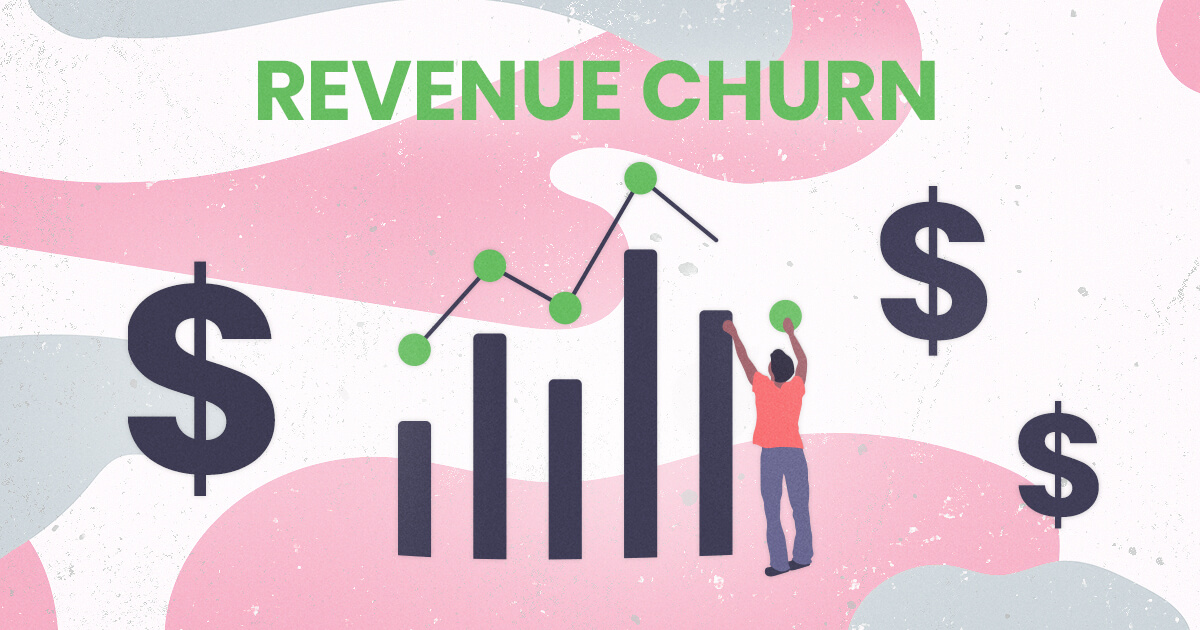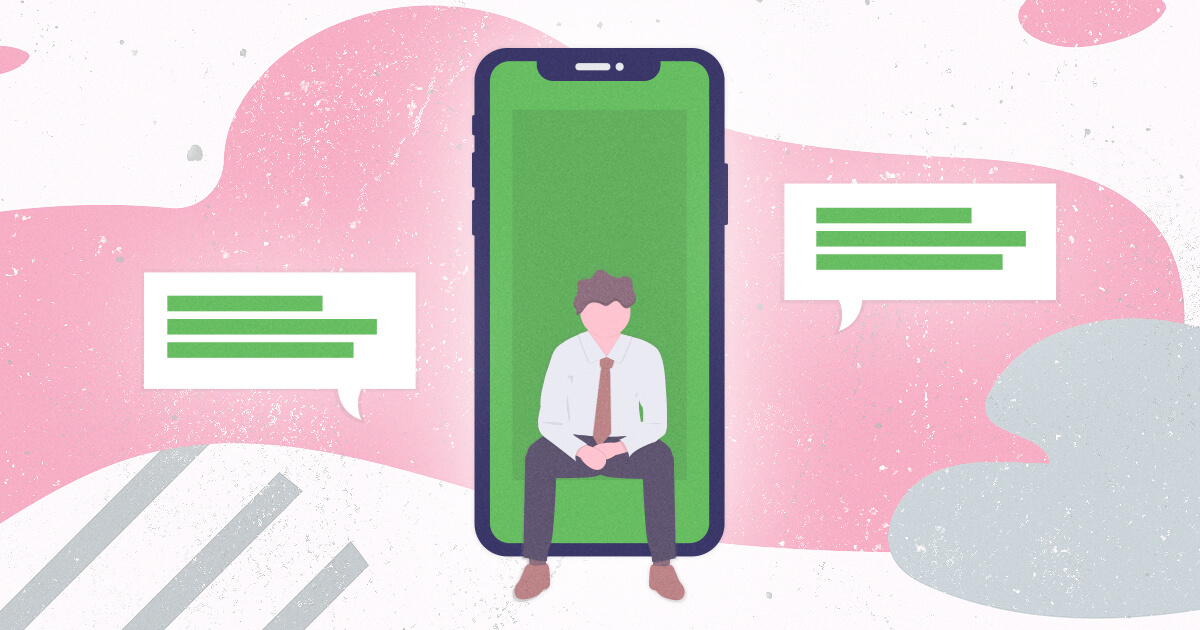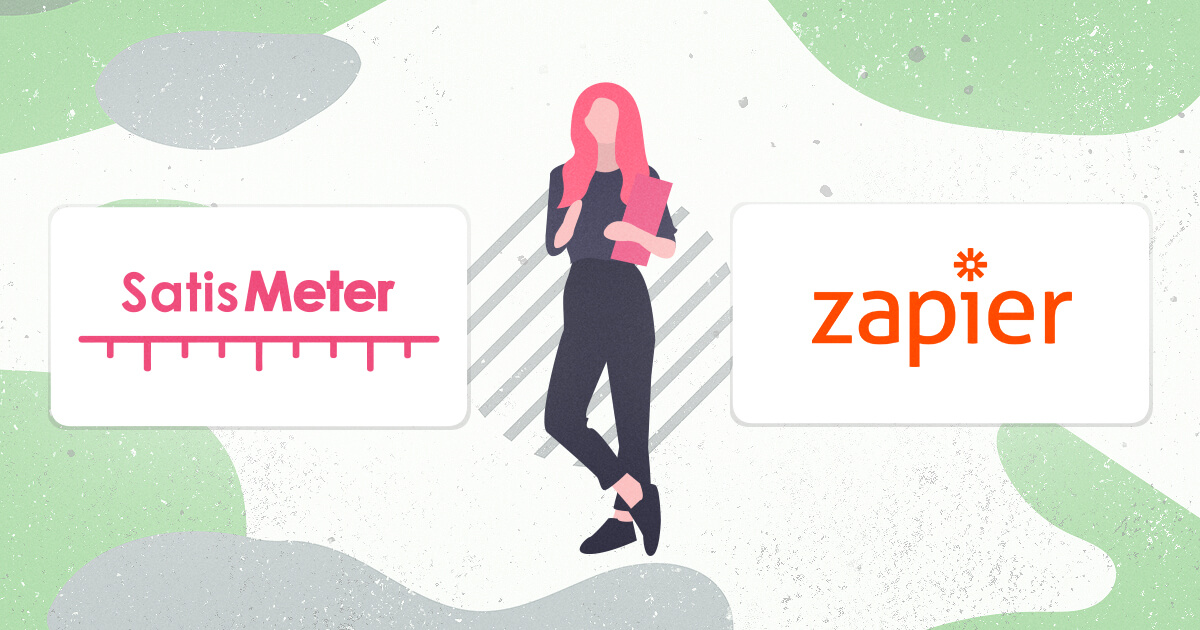The world of metrics can get confusing fast, and if you’re a growing startup like us, knowing which ones matter can mean the difference between stormy waters and plain sailing. We think and talk a lot about churn, as one of SatisMeter’s main functions is to reduce it – if you want to try it out for yourself, you can start for free.
However, we’ve written very little here about Customer Lifetime Value, or CLV, despite the fact that to understand how churn is affecting your business, being on top of CLV is absolutely essential.
For that reason, we’re going to have a look at what CLV means, how it’s calculated, and where exactly churn and NPS come into the picture.
What is Customer Lifetime Value?
So, let’s get the ball rolling. In layman’s terms Customer Lifetime Value refers to the revenue a given customer (or often any one of a segment of customers) will bring in throughout all of their time with your business, minus the cost of acquisition. Essentially it’s a calculation of the net profit you can expect from a customer, taking into account the period of time they will stay with you.
Let’s take an example to see how exactly we would calculate this figure.
We’ll look at a SaaS business, with a monthly subscription pricing model. So your monthly subscription costs $50 per month, and you’ve discovered that your average user stays with the service for 18 months. The gross value of this customer is 18 x $50 = $900.
Acquisition Costs
However CLV requires that we take into account what it cost us to get the customer in the first place, in other words our sales and marketing expenses. For the sake of simplicity let’s say your SaaS business is lucky enough to do well without a sales team, but that your marketing costs over the last six months totaled $50,000. You know that the campaigns this budget covered brought in 250 new customers, meaning each cost on average $200 to acquire.
This gives a Lifetime Value of $700, not bad! From the starting point of this relatively simple calculation most businesses would do well to further segment their users, for example by the cost of their monthly subscription (if different levels are offered), or the cost of the marketing campaigns that brought you their business.
This covers the basics of how CLV is calculated, though of course for various business models the exact figures used will vary. Depending on the stage of your business a different kind of calculation altogether may be appropriate.
For new businesses predicting customer lifetime and spending patterns can be a seriously tricky business. However this doesn’t rule out the possibility of calculating CLV, rather necessitates the use of careful estimates and predictions. You can read an excellent article the technicalities of how this can be done here.
CLV and Churn
That’s all fine and well, but I hear you wondering where churn comes into all this. The fact that we calculate CLV the way we do makes clear that what you put into gaining a customer matters, and that the longer you keep them the higher their value will be, what we haven’t discussed is how customer loyalty makes a difference.
70% of companies agree acquiring a new customer costs more maintaining an existing account, but what tends to be less understood is the scale of the impact churn is having on your profit margins. Let’s take another example and see what happens to revenue and CLV depending on how many customers leave you.
Back to our example, what happens to our SaaS business in two different scenarios, assuming they have a total of 300 customers paying $50 per month. In the first our business has a monthly churn rate of 6%, and in the second they’ve managed to reduce that to only 2%.
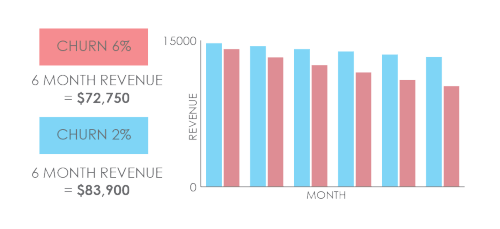
A reduction of only 4% in churn generates extra revenue of $11,150, over only 6 months.
This loss is a dramatic one for any business, our first example would need to gain 94 customers during this time just to see a chance of growth, and in reality this number would be higher owing to the cost of customer acquisition as discussed earlier.
Looking at the average CLV of these two businesses is another way to truly highlight the effect churn is having. We can calculate an average customer lifetime dividing 1 by each company’s churn rate, then factoring in the original acquisition cost of $200. The contrast is truly striking.
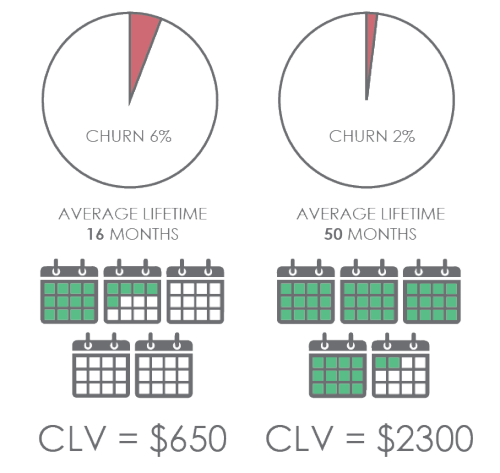
What Can You do to Improve?
The solution here seems simple because it is, retaining existing customers is vital in creating growth for your business. But how can we go about reducing churn? Adequate customer support and fair pricing models are important in keeping our customers happy, but there’s more you can do to stop your users jumping ship.
Measuring satisfaction using a Net Promoter System segments your customers in a way which immediately highlights those at risk of churning. By using SatisMeter you can reach out to those users simply and quickly, provide solutions to their problems, keep them from leaving for your competition.
Even better, by collecting verbal feedback consistently you can begin to form a picture of where your product is letting you down. These insights allow businesses to address existing problems, and develop a roadmap which will produce more happy users.
The effects of churn reduction on CLV and the overall health of your company simply can’t be overstated. Whether you’re just starting out, or want to do more to improve your margins, SatisMeter provides a simple and affordable way to increase loyalty, improve customer lifetimes, and ultimately increase growth.
Curious to see the effect of NPS on your churn rate? Try SatisMeter completely free.
